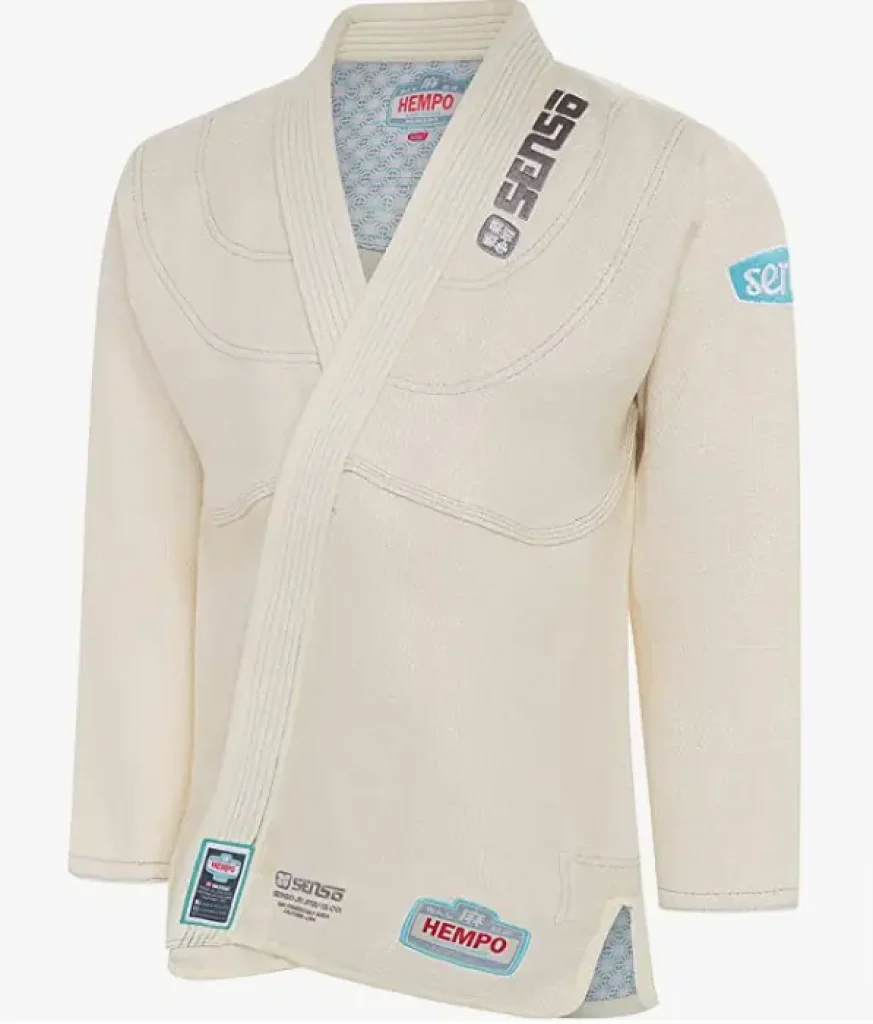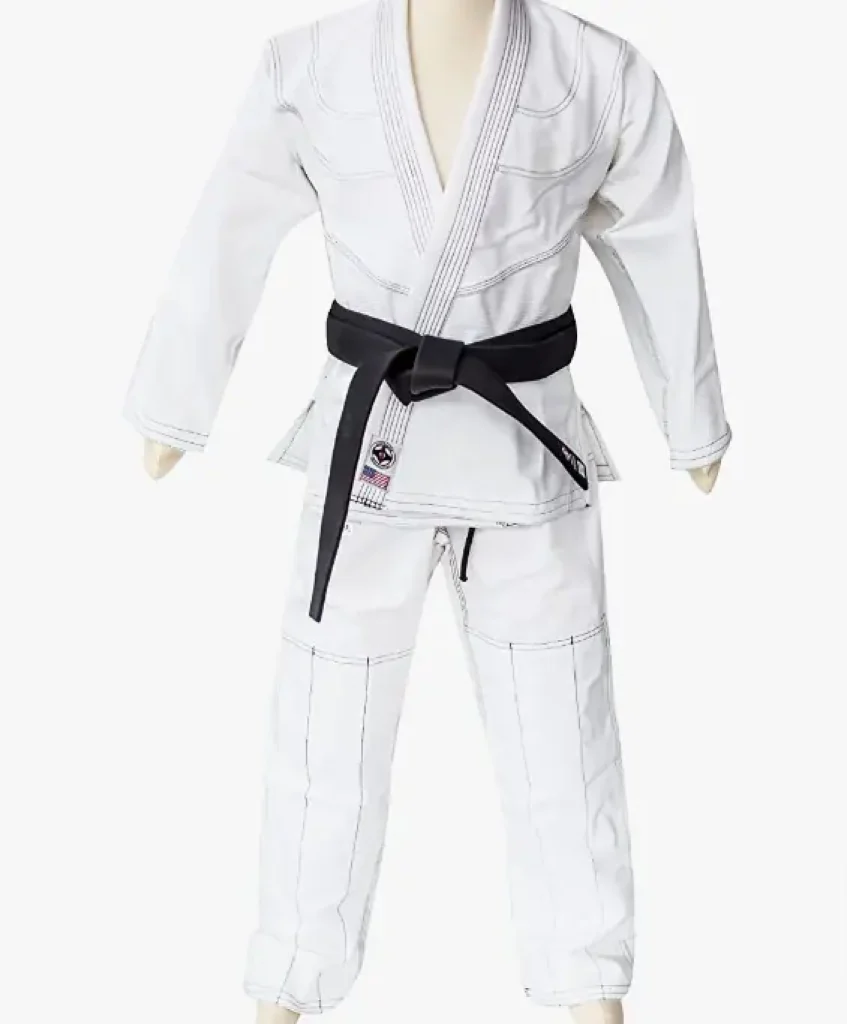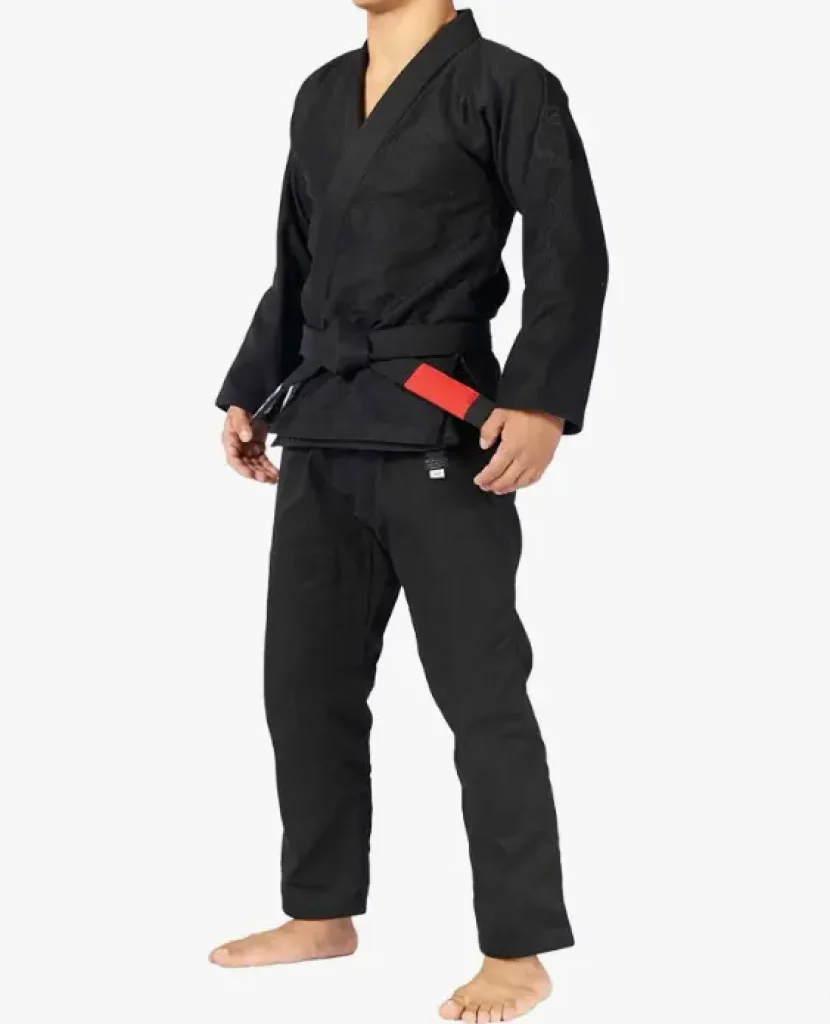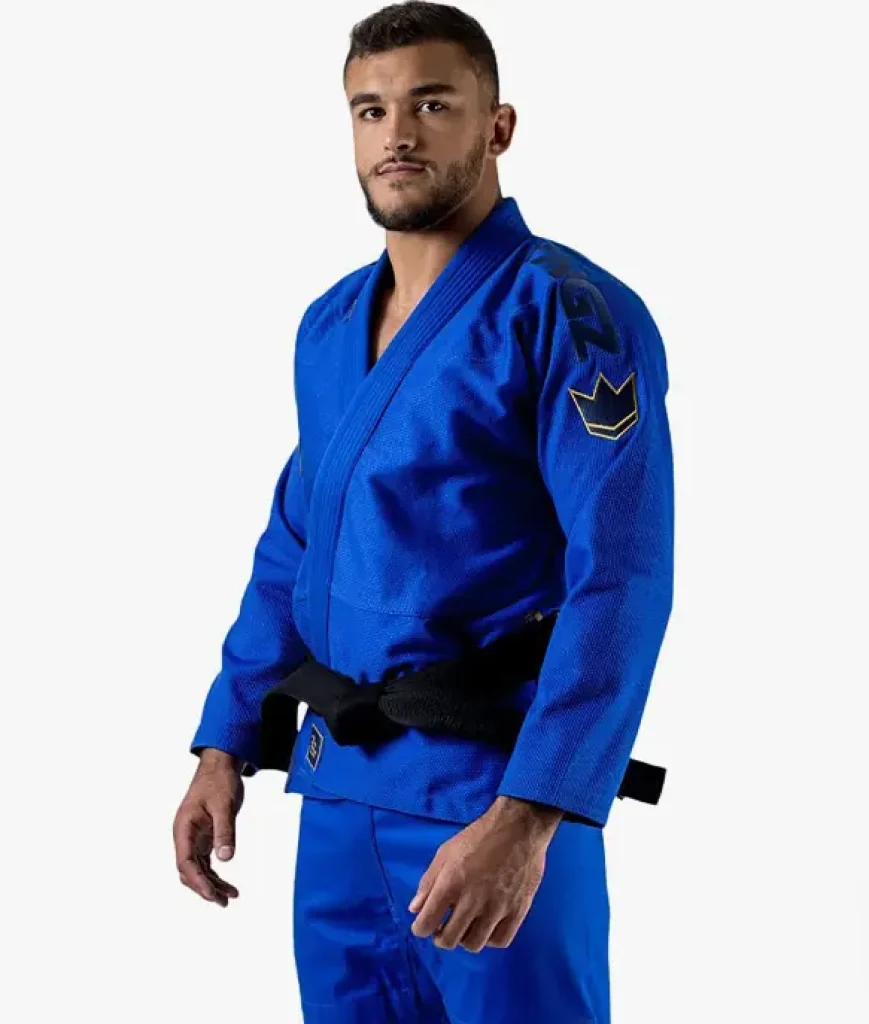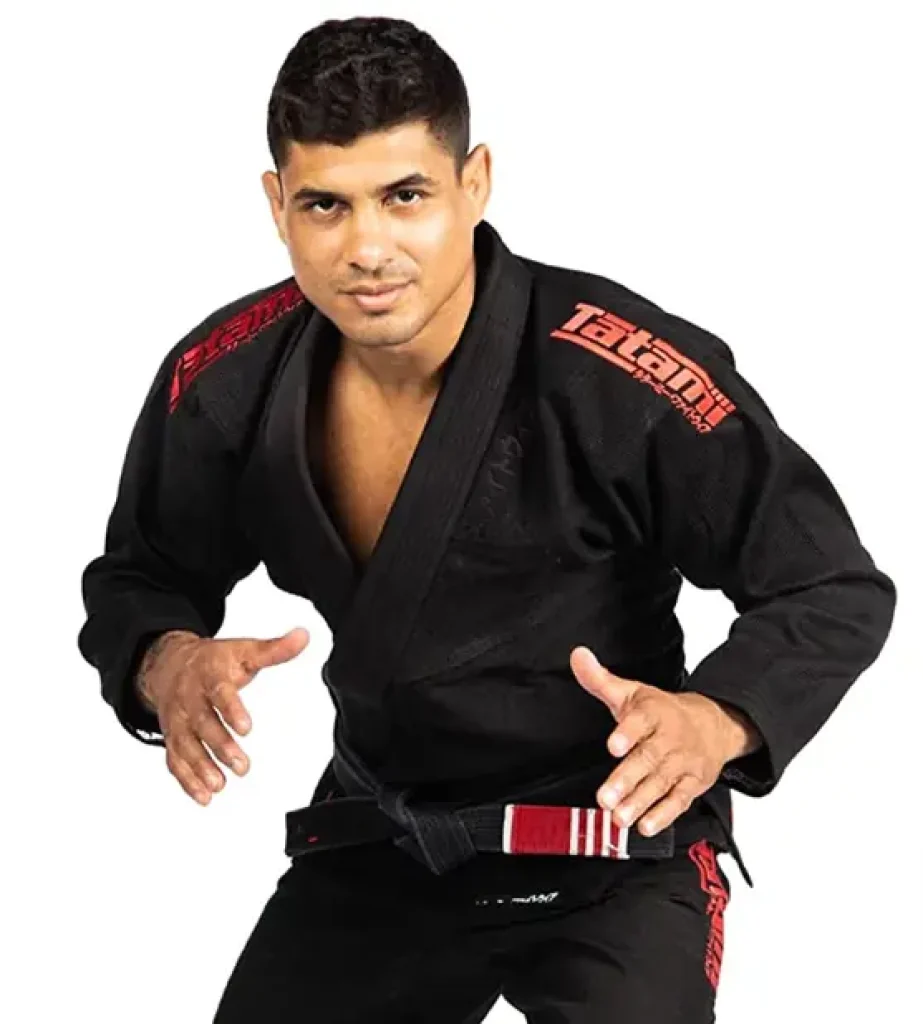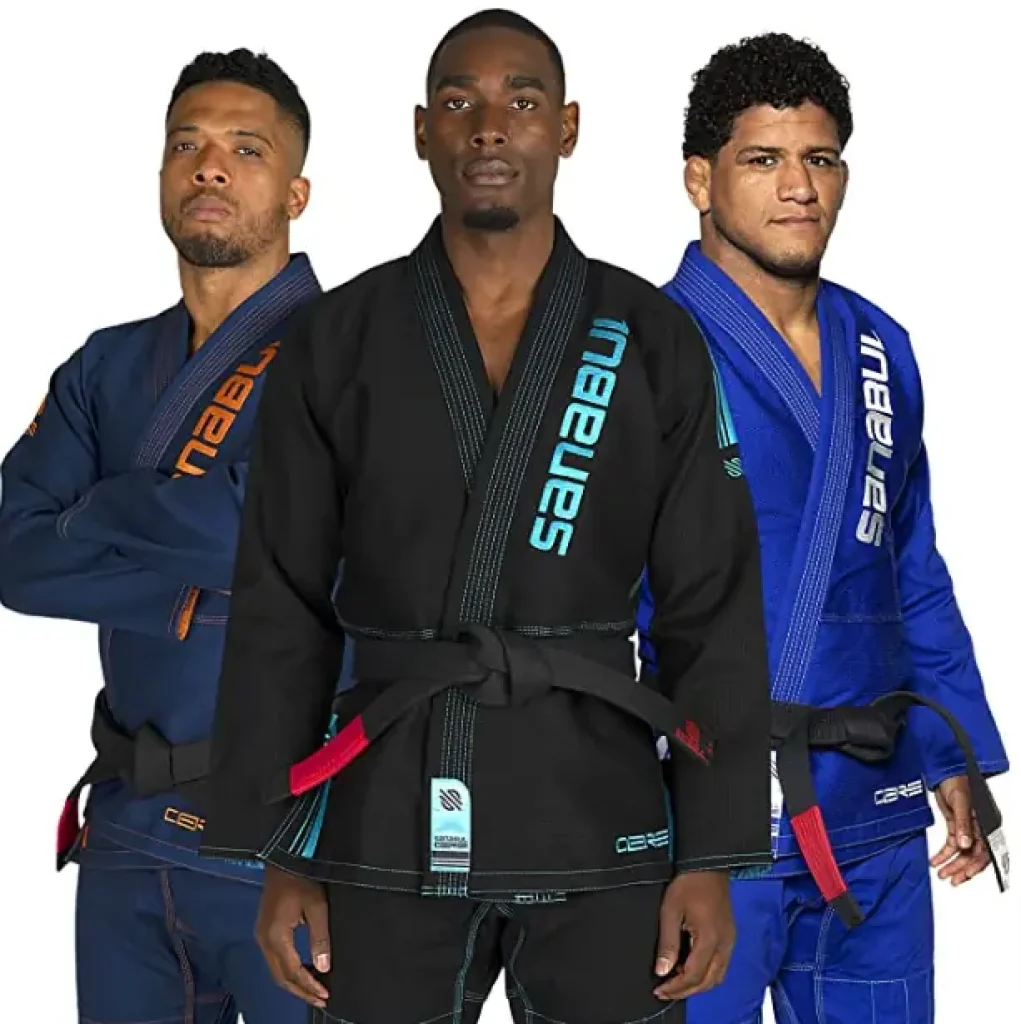Best BJJ Gi for Competition [Top 7 Favorites Revealed]
One of the most important pieces of equipment for BJJ practitioners is the gi, which is also known as a kimono. A gi is typically made of cotton and consists of pants and a jacket with a rank belt. When it comes to competing in BJJ tournaments, having the best BJJ gi for competition can make all the difference.
The BJJ uniform – a gi – is similar to a judo uniform but with some differences in style and material.
Let’s explore what is a competition gI in BJJ in detail and what is the best competition gi to choose for your performance.
The Importance of a Good BJJ Gi for Competition
The competition gi in BJJ may be specifically designed for tournament use (but not necessary) and differs from regular training gis in several ways.
It’s important to choose the best competition gi for your body type, style of play, and personal preferences to give yourself an edge on the mat.
A good quality gi can help you move more easily during matches, provide better protection from your opponent’s attacks, and give you an edge over your competitors.
On the other hand, a poor-quality gi can result in discomfort or even injury during training or competition.
Choosing the right gi for competition involves considering multiple factors such as material, fit, weight, and design elements that could affect performance like collar thickness or reinforcements used on seams.
The right combination of these factors will ensure you have an optimal experience when competing in BJJ tournaments.
Having the right BJJ gi is crucial for anyone who competes in this challenging sport. With so many different options available on the market today it’s easy to get lost in all the brands and styles available but understanding each factor listed above will help guide you towards making confident choices about your gear selection when it comes time to compete at your next tournament.
Material: Choosing the Right Fabric for Your BJJ Gi
When it comes to choosing a BJJ gi for competition, one of the most important things to consider is the fabric.
There are several different materials that gis can be made from, each with its own set of pros and cons.
Here are some of the most common fabrics used in BJJ gis:
Cotton
Cotton is the most popular and traditional type of fabric for BJJ gis. It is soft, comfortable, and breathable, which makes it a great choice for long training sessions and competitions.
However, cotton does have its downsides if the fabric was premade of poor quality (loose knots, not preshrunk, etc.).
One major issue is that it tends to shrink when washed and dried, which can make it difficult to find a gi that fits properly.
Additionally, cotton can become heavy when wet with sweat or water – this can be problematic during competitions where weight restrictions are in place. So pay attention to the correlation between gi weight and your weight condition before the tournaments.
Hemp
Hemp is a sustainable and eco-friendly fabric choice that has been gaining popularity in recent years. It is known for being durable and resistant to odor and bacteria growth.
Hemp also tends to hold its shape well over time. However, hemp does have some drawbacks as well.
It can be a bit stiffer than other fabrics initially until it has been broken in through washing and wearing.
Hemp also tends to be more expensive than cotton or synthetic blends.
Cotton Blends
Cotton, synthetic, and hemp blends are sometimes used by manufacturers as BJJ gi fabrics. These materials are typically lightweight and moisture-wicking, which makes them ideal for competition use.
One downside to synthetic blends is that they aren’t always as durable as cotton or hemp.
Additionally, some people find that these materials don’t breathe as well as cotton does, which can lead to discomfort during long training sessions or competitions.
The material of your BJJ gi is an important factor to consider when choosing a gi for competition.
A good option is to choose the cotton and hemp blend. Although it is a rare one to find.
Whether you opt for cotton, hemp, or a synthetic blend will depend on your personal preferences and needs. It’s worth taking the time to research different fabrics and try on gis made from each before making a final decision.
Fit: What is a Competition Cut Gi?
What makes a gi competition legal?
When it comes to BJJ competitions, having a well-fitted gi can make all the difference. A gi that is too loose or too tight can hinder performance and even lead to disqualification.
This is why it’s important to take the time to find a gi that fits well and allows for maximum mobility during matches. To measure for proper fit, there are a few key areas to focus on.
First, consider the length of the gi. The pants should be long enough to cover your ankles without touching the ground, while the jacket should extend down and be longer than the gluteus muscle.
It’s also important to look at width – specifically, how much space there is between your body and the fabric. You don’t want it too loose, as this can make it easier for opponents to grab onto you during matches.
On the other hand, you don’t want it too tight either, as this will restrict movement and make it difficult to breathe.
Another important aspect of fit is the sleeve length.
BJJ competition gi rules state that sleeves must not extend past your wrists – anything longer than this can lead to disqualification. To ensure proper sleeve length, try on different gis and move around in them before making a purchase decision.
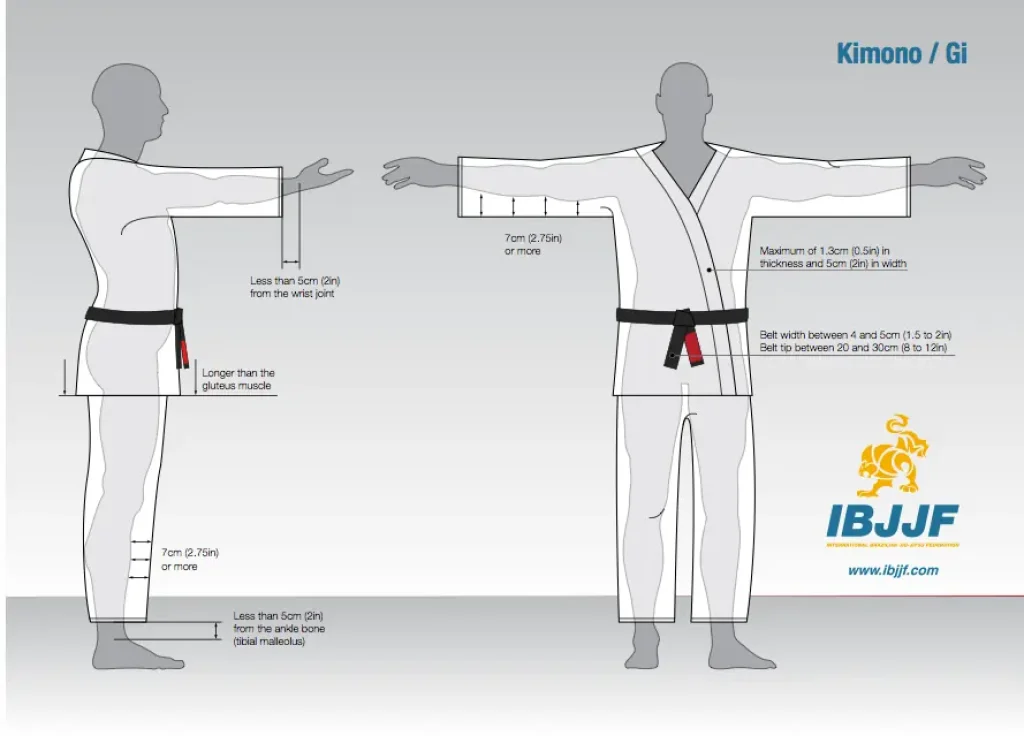
In addition, pay attention to how well the gi fits around your shoulders and neck – these areas should allow for comfortable movement without being overly restrictive or loose-fitting.
Overall, finding a properly fitting competition gi takes some time and patience but is worth investing in for improved performance on the mat.
Brand Recommendations: Best BJJ Gi for Competition
Choosing the right BJJ gi for competition can be a daunting task, especially with so many brands and styles to choose from.
After conducting extensive research, testing, and taking into account the best competition gi Reddit recommendations, here are our top competition gi picks:
Fuji Sports
Fuji Sports is a well-known brand in the BJJ community and for good reason.
Their competition gis are made with high-quality materials that provide durability, comfort, and flexibility. The jackets are constructed with pearl weave fabric of different density to choose from that allows maximum range of motion during matches.
The pants are made with ripstop or twill material for added strength and durability. In addition to their high-quality construction, Fuji Sports offers a variety of colors and designs to suit any competitor’s style preferences.
Almost in every their gi description you will find a IBJJF approved gi specification.
One of the most popular Fuji gis for years already is the Fuji All-Around gi.
Kingz
Kingz BJJ gis are on the market since 2011 and is a well-known and respected brand in the jiu jitsu community worldwide.
Kingz gis generally considered to be good for competition. They produce high-quality gis that meet the requirements and standards of competition. Kingz gis are known for their durability, fit, and comfort, which are important factors for athletes competing in BJJ tournaments.
However, it’s always a good idea to check the specific rules and regulations of the competition you are participating in to ensure that the Kingz Gi model you choose complies with their requirements.
Tatami Fightwear
Tatami Fightwear offers a wide variety of BJJ gi models suitable for all skill levels – from beginners to seasoned competitors – but their Estilo model stands out as one of their best gis designed specifically for competitive use.
Made from premium cotton materials, the jacket features a new Y-shaped jacket vent system designed to keep you cool under pressure while providing more flexibility than other options on the market today.
Are Tatami Gis IBJJF Approved?
Tatami gis are IBJJF approved. Even more, you will almost always see their sale box on the major tournaments. I personally bought a gi before my IBJJF European tournament in Portugal.
In addition, they always offer a discount during the tournament sales.
Overall, Tatami Fightwear is a great choice for competitors who want a stylish and durable gi that can withstand the rigors of training and competition. Also, they have always cool jiu jitsu gis in custom colors or limited collab editions.
When selecting a brand, it’s important to consider factors such as material, fit, weight, and design elements to determine which brand best suits your needs.
Weight: The Importance of Choosing the Right Gi
BJJ competitions have specific weight restrictions that competitors must adhere to. These restrictions can vary depending on the competition, but they are always strict.
Choosing a gi that fits within these weight rules is crucial for success in competition.
One factor to consider when choosing a gi based on weight is the material it is made from. Some materials are heavier than others, which can put you at a disadvantage if you are already close to the weight limit.
In this case, you can consider looking for a lightweight competition BJJ gi. The density of the gi fabric is something that manufacturers are playing around with and in this way bringing on the market new trends.
Best Lightweight Competition Gi
Hyperfly
Hyperfly is another top brand when it comes to competition gis. One of the popular models lately is the Hyperfly ProComp 4 designed specifically for tournament use.
The jacket is made with soft-to-the-touch pearl weave fabric that provides comfort while also being lightweight enough to allow freedom of movement during matches. The pants have reinforced seams and knee padding for added durability and protection during intense training sessions or matches.
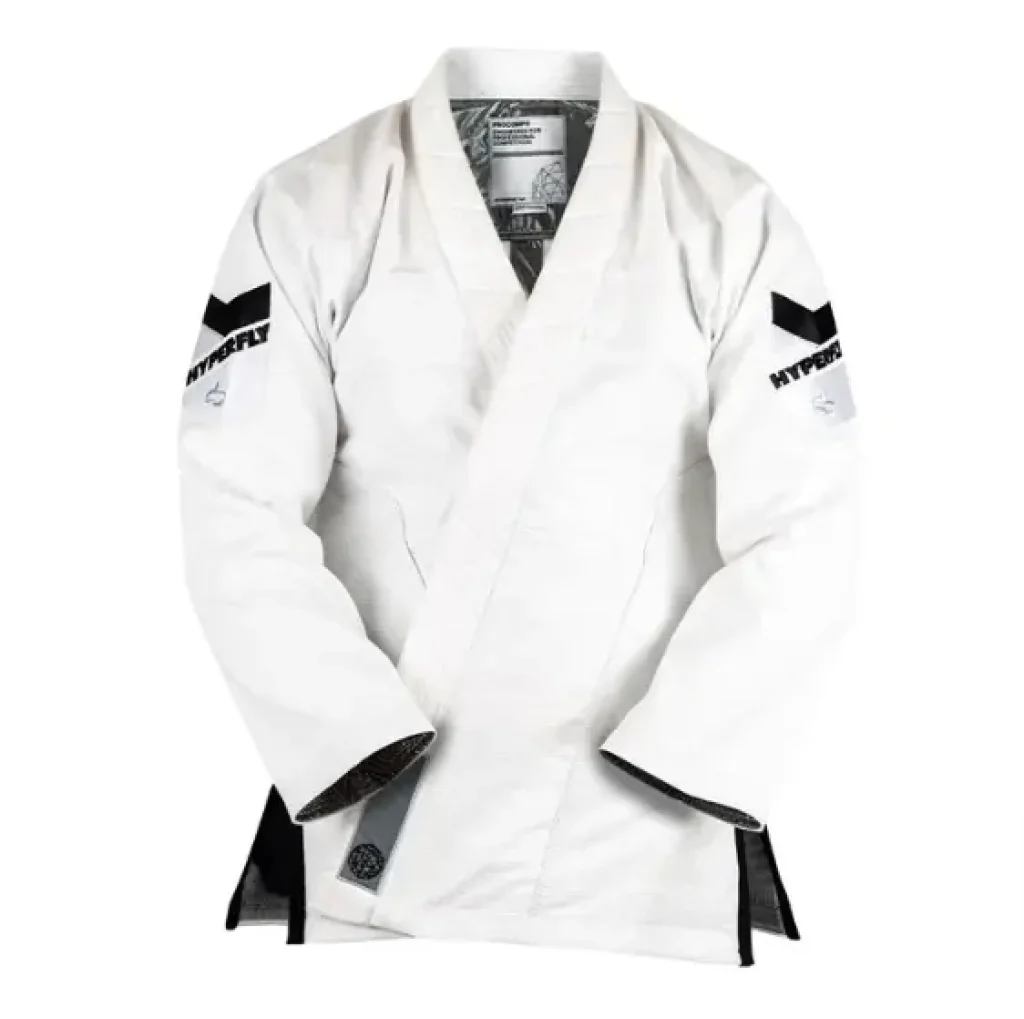
Sanabul Core Competition Gi
Sanabul BJJ gis are a popular choice among practitioners, including those who compete in BJJ.
While Sanabul is primarily known for producing affordable and beginner-friendly gis, they also offer options suitable for competition at higher price ranges and quality.
The quality and durability of Sanabul gis are generally considered to be decent, especially considering their price range. They are often praised for their lightweight design and comfortable fit, which can be advantageous during competitions that prioritize speed and agility.
Sanabul Core Competition Gi Review from Customer Reports
| Rating | Comment | Color | Size |
|---|---|---|---|
| 4.0 | The item is an ok, light, and nice design, good size. | White/Blue | A2 |
| 4.0 | This is a very sturdy and solid gi. Make sure to wash it in cold water unless you are looking to shrink it. The customer service of the company is top-notch. | Grey/Red | A0 |
| 5.0 | The gi looks and feels great. | Navy/Orange | A2 |
| 5.0 | Runs large compared to other brands, has good quality | Black/Blue | A2 |
| 4.0 | Great BJJ kimono, stylish, and performs great. | Grey/Red | A0 |
| 3.0 | On the top right-hand side shoulder, the stitching was not so good. It was coming out as soon as it was took out of the box. | Blue/Silver | A3 |
| 5.0 | With fraying decorative patches after one wash, pants are lighter than the Essentials line, better fit than the Essentials line, and overall have a good price point. | Navy/Orange | A2 |
| 4.0 | The item is an ok, light, and nice design, a good size. | Black/Gunmetal | |
| 4.0 | With fraying decorative patches after one wash, pants are lighter than the Essentials line, better fit than the Essentials line, and overall has a good price point. | Blue/Silver |
How to Choose Based on Weight Restrictions
When choosing a gi based on weight restrictions for competition, it’s important to carefully read and understand the rules of each specific event.
Typically, there will be restrictions regarding both the total weight of your gi and also how much each individual piece weighs (e.g., jacket vs pants).
If you find yourself close to or over the allowed weight limit for your competition, there are a few things you can do:
- Consider purchasing an ultralight gi made from a blend of materials (cotton/synthetic)
- Remove any unnecessary patches or embroidery from your current gi
- Opt for a simpler design with fewer reinforcements
It’s important not to sacrifice quality for weight when choosing a BJJ gi for competition. Make sure that whatever decision you make does not compromise your performance during matches.
Design
When it comes to choosing a BJJ gi for competition, design elements can make all the difference in your performance.
Two of the most important design features to consider are collar thickness and reinforcements.
Collar Thickness
The collar of your BJJ gi is a crucial element during competition.
A thick collar can make it more difficult for your opponent to grip or choke you, giving you an advantage in the match. When looking at collars, you want to aim for a thickness between 1-2 inches.
Anything thinner than that won’t provide enough protection against chokes and grips, while anything thicker will be too stiff and may slow down your movements.
Collars come in different materials as well, with the most popular being rubber and EVA foam.
Rubber is more durable but may take longer to break-in, while EVA foam tends to be softer and more comfortable from the start but may wear down easier over time. Ultimately, it comes down to personal preference and how much you’re willing to spend.
Reinforcements
The durability of your gi is important not just for longevity but also for performance during competitions.
Reinforcements are added layers of fabric that are sewn onto high-stress areas of the gi such as the knees and armpits. They serve two purposes: protect against wear and tear caused by training and provide additional strength during matches.
The type of reinforcement used can vary between brands; some use ripstop fabric while others use cotton twill. Ripstop fabric has a grid pattern that reinforces areas prone to tearing without adding bulk or weight, making it a popular choice among many competitors.
In addition to knee pads and armpit reinforcements, some gis also have reinforced seams along stress points like shoulder and hip areas. These extra layers of fabric can help prevent tears and make your gi last longer, especially if you train and compete frequently.
Overall, the design of your BJJ gi can have a significant impact on your performance during competition.
By considering collar thickness, reinforcements, and other important design elements, you can choose a gi that not only looks great but also gives you an edge against your opponents.
Gi Color
What color gi can you wear in competition?
In competition, the color of your gi can play an important role.
Different organizations and tournaments may have specific rules regarding gi colors. While the most common colors are white, black, and blue/navy, some competitions may allow other colors, such as only blue and red.
However, most all organizations strictly stick to the traditional BJJ competition gi colors white, black, and blue gis. It’s crucial to check the specific rules and guidelines of the tournament you’re interested in to avoid any surprises on the competition day.
What gi colors are allowed in IBJJF?
For instance, according to the IBJJF uniform rules you are allowed to wear gis in three permissible colors: white, royal blue, or black. It’s important to note that gis with mismatched top and pants colors are not allowed, nor are gis with collars of a different color than the rest of the top.
As for painted gis, they are generally not allowed, unless the paint is specifically designed as an academy or sponsor logo.
Is navy blue IBJJF legal?
This question arises regularly on the forums. Yes, navy blue gi color is IBJJF legal. I personally was competing once in a Fuji All-Around navy blue gi in an IBJJF tournament.
Conclusion
The mentioned brands are just a few of the many options available on the market today as the best BJJ gi for competition.
Other brands and gi models to consider as the best competition jiu jitsu gi are:
- Koral MKM Competition gi
- Gameness Air Pro
- Fuji Suparaito
- 93 Brand Hooks V3
- Atama Classic gi
- Illest Metal Stand 350 gi
- Vulkan Pro gi
- Inverted Gear gi
- etc.
Choosing the best BJJ gi for competition doesn’t have to be difficult if you focus on key factors such as material, fit, weight restrictions, design elements, and maintenance requirements.
Remember that investing in high-quality gear will pay off in the long run by providing durability and functionality during training sessions and competitions.
When shopping for gis keep all of these factors in mind so that you find one that truly meets your needs and helps you perform at your best.
